The Optics Division of Metabolic Studio (2010 - 2023) was founded by Lauren Bon in 2010 to create a photographically-focused practice that grew from, amplified and expanded the actions of Metabolic Studio at large. Bon worked with Optics Division principal members Richard Nielsen and Tristan Duke, and with photographers Josh White and Red Rorkopf, designer/engineer Guy Hatzvi and fabricator Phil Weil, developing expansive and inclusive ideas of what photography is and what it can do.
Optics Division has also often used photography as a powerful strategy for bearing witness to the experiences of the communities and ecologies Metabolic Studios has worked with, and journeyed alongside. Metabolic Studio’s speculative and remediating actions in Payahuunadü (Owens Valley), in the lives of the area’s residents and with the land itself, heavily shaped the direction Optics Division took on its 13-year journey. Its practices have been truly experimental and its actions concerned with manifesting a “land-based” idea of photography.
Optics has observed and participated in the large-scale and long-term actions that Bon and Metabolic Studio have undertaken since the Division’s formation, including One Hundred Mules Walking the Los Angeles Aqueduct, to memorialize the centenary of the LA’s water theft from the Owens Valley, and Bending The River, an infrastructural artwork utilizing adaptive reuse and reconnecting Los Angeles with its original source of water, the Los Angeles River.
Subscribing to an organic, DIY ethos, Optics developed its own set of tools, first formulating chemistry, papers, emulsions, and glass plates, then building its own lenses, shutters, apertures and eventually cameras, including the Liminal Camera, the Silo Camera, and numerous tent and plywood cameras. With these technical investigations, Bon and Metabolic were able to shoot and develop large-scale images created in situ, making these cameras a part of the actions and activations.
The Liminal Camera, housed in a shipping container and transported by flatbed truck, operates as a large-scale pinhole camera, developing prints as large as 12 feet long by 6 feet high. The Silo Camera uses the same principle, however this camera body is an entire silo on the edge of Owens Lake that formerly belonged to the Pittsburgh Plate Glass Company. The tent camera, made of reflective fabric to ensure no light penetrates the interior chamber, was developed for use on the move, primarily during Metabolic projects involving ceremonial mule deployments. It’s also part of a larger Optics project, utilizing a “water lens” to take advantage of the liquid’s refractive optical properties.
The Eclipse Camera, a plywood camera, was designed to document the 2017 solar eclipse, and is now the primary documenting camera for Optics Division. These cameras, photographic “spaces of wonder,” have provided an enduringly effective way for Metabolic Studio to create discursive and contemplative spaces for the communities and audiences it has served – creating vantage points for remembrance and revived awareness of our environments and contexts.
When Optics Division was founded in 2010, it immediately became a central axis for Bon’s AgH2O project, which focuses on the extraction of silver and water in the Payahuunadü bioregion, and the legacy of environmental destruction the extraction caused. From the 1860s until the late 1950s, the Cerro Gordo silver mines in Payahuunadü were heavily exploited, and extracted silver was used to make the film used in both still photography and Hollywood feature film production. In addition, the water resources of Payahuunadü were rerouted – via the Los Angeles Aqueduct, which opened in 1913 – to serve the burgeoning city of Los Angeles, at deep social and ecological cost to the communities in Owens Valley.
Further refining their process, Optics Division explored making photographic film and prints from the materials of Payahuunadü: collecting silver from the valley’s abandoned mines, harvesting halogen salts from the dry lakebed, rendering gelatin from local cattle to carry the light-sensitive photographic chemicals, and formulating photo developers using foraged materials such as pine needles and wildflowers.
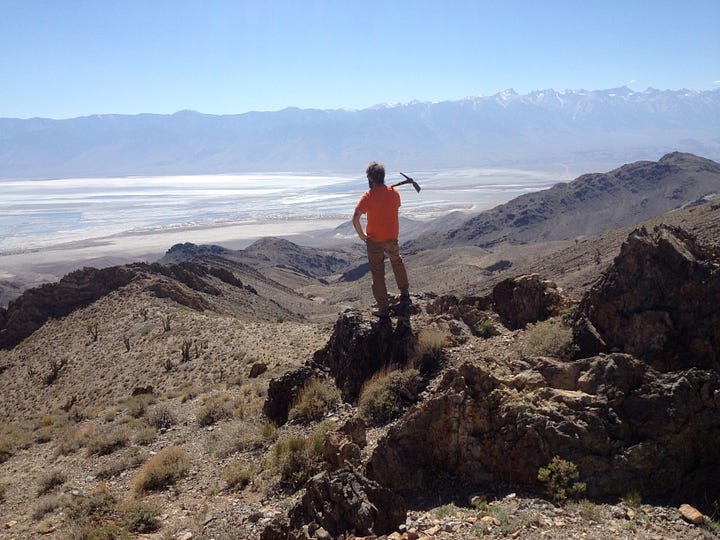
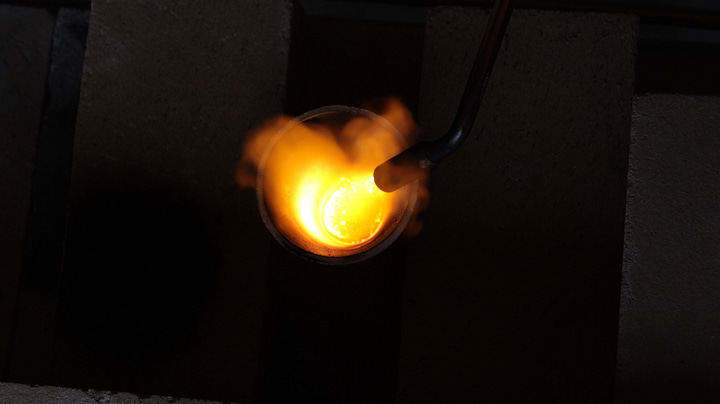
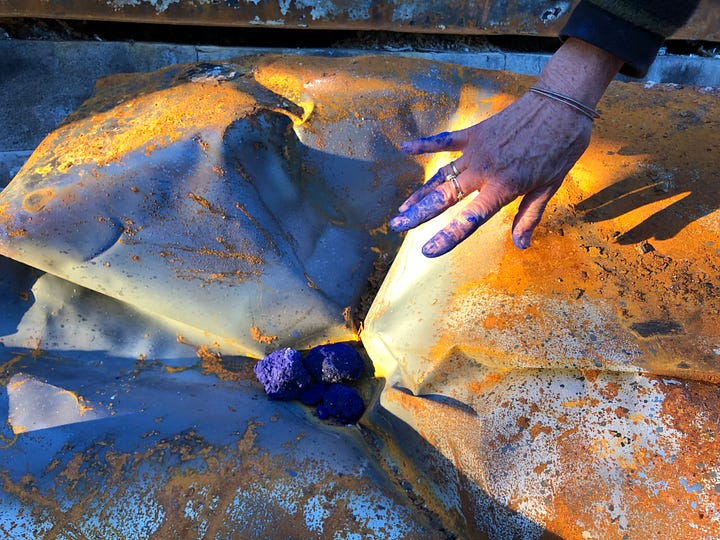
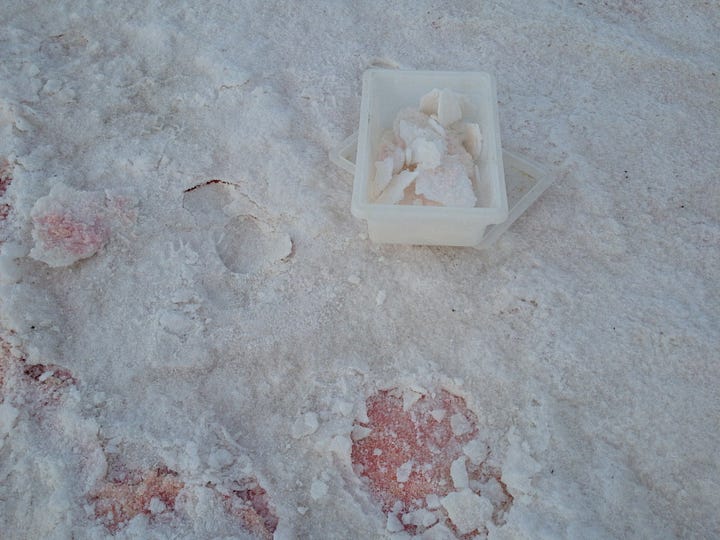
An axis shift in Optics Division’s approach to photography - connecting practice even more concretely with the land - came when they began to work with the seasonal pools of blood-red water in the (Owens) dry lakebed. These pools, common in arid landscapes, get their red color from bacteria that thrive in extreme salinity, known as extremaphiles. The extremophiles create sodium thiosulfate, a chemical “fixer” often used in photography, as a waste product and through targeted experimentation, Bon and her team discovered the water from these pools could function as processing chemicals for photographic negatives and prints.
This created an indexical relationship between the way the images are created and the subject - the land - being documented. The images were Payahuunadü as well as being a representation of the region, made from the same materials as the landscape itself. The Lakebed Developed (2020-2022) series showed this to great effect. Photo paper with latent images, exposed inside the Liminal Camera, was carried out onto the dry lake bed and submerged in these brine pools. The sodium thiosulfate from the bacteria interacted with the photo paper, fixing the images from the pinhole camera.
On a conceptual level, this discovery shifted Optics Division from an extractive paradigm to a deeply generative, land-based practice. In 2022, Optics Division partnered with the University of Wyoming Microbiology Department to test the theory that the bacteria in the lakebed were metabolizing sulfur compounds and contributing directly to the photochemical reaction in the lakebed developing process. Chemical, biological, and genetic analysis showed active participation of the bacteria in processing the film, cementing the idea of contemporary art as a vehicle for scientific questioning and new fields of knowledge.
As Lauren Bon intended at the conception of Optics Division, its capacity to create works of art and photographic programs that can operate within the infrastructure of public and cultural spaces has been pivotal. Like a photographic “Trojan Horse”, Optics Division has rendered inspiring works of art that draw public attention and connect Metabolic Studio to the wider discussions about the role of art in understanding and galvanizing our participation in the survival of humans and our environment.




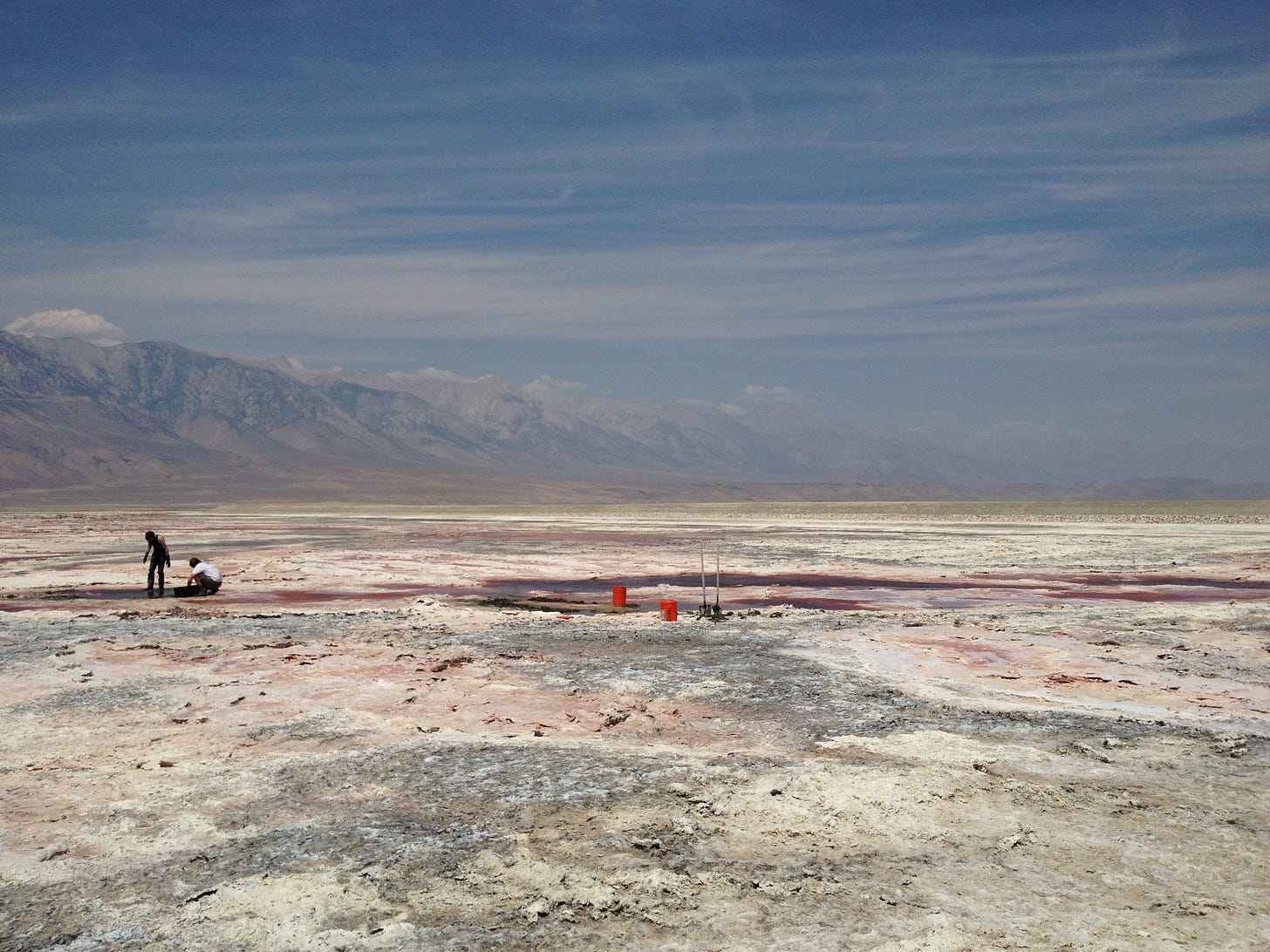
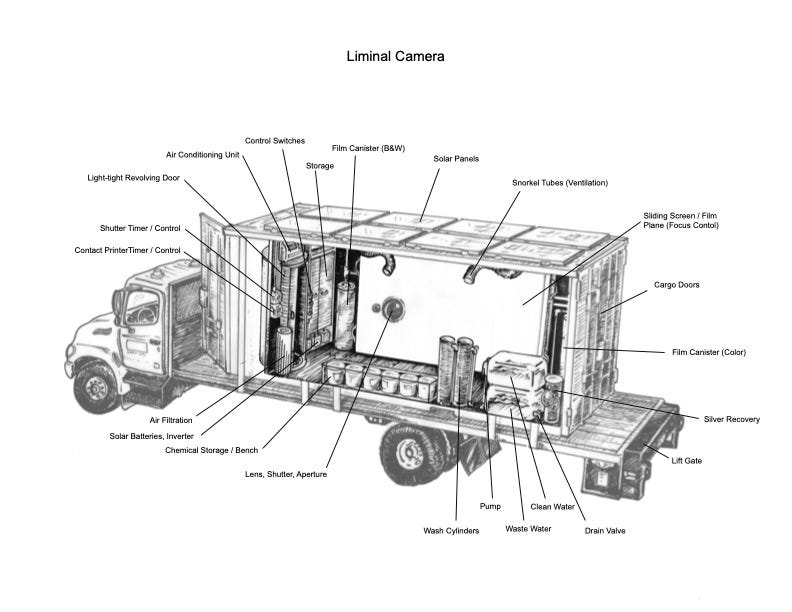



very nicely done overview of Optics Division. I hope you may produce a book sometime documenting its history and a critical selection of the resulting photos. Clap Clap.
I love the creativity and ingenuity of the Optics Division. From the documentation of rapidly vanishing vistas to the sublime images developed in the lakebed, this work is extraordinary. Brava!